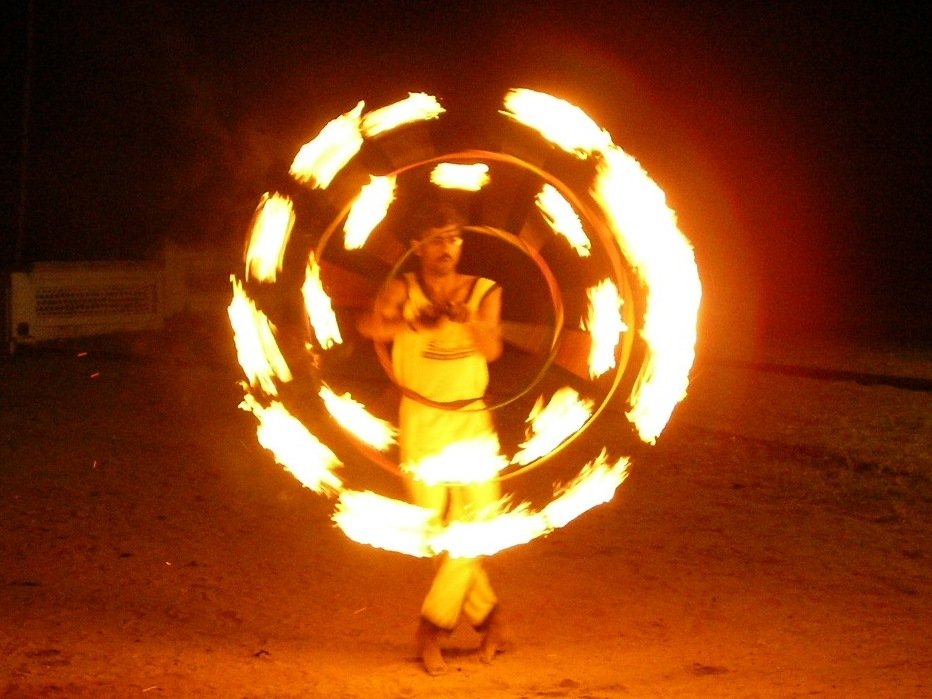Silambam, an ancient martial art, requires a high level of physical fitness and flexibility to perform its intricate movements and techniques effectively. The training enhances overall strength, endurance, and agility, and cultivates flexibility in both the upper and lower body.
Physical Fitness and Flexibility
1.Strength and Endurance:
Silambam involves dynamic footwork, weapon handling, and defensive postures that demand both muscular strength and stamina. Practitioners must develop strong core muscles, powerful legs, and flexible arms to execute rapid strikes, defensive moves, and maintain endurance throughout training and sparring sessions.
2.Flexibility:
Flexibility is essential for executing high kicks, smooth weapon handling, and maintaining various stances without straining muscles. Through targeted stretching and mobility exercises, practitioners improve their joint flexibility, particularly in the hips, shoulders, and wrists, allowing for better range of motion and fluidity in movement.
3. Balance and Coordination:
Silambam’s footwork demands excellent balance and coordination, as practitioners transition between stances and execute precise movements. Developing balance helps maintain stability during rapid attacks and evasive maneuvers, while improved coordination between hands and feet enhances overall effectiveness in combat.

Mental Discipline and Focus
Mental discipline and focus are crucial aspects of Silambam, as the martial art requires precision, patience, and strategic thinking. The ability to concentrate and maintain mental clarity is necessary for mastering techniques and performing well under pressure.
1. Concentration:
Silambam involves executing complex movements and strategies in real-time. Practitioners must stay mentally focused on every aspect of their technique, from foot placement to timing of strikes, while maintaining situational awareness during sparring.
2. Self-Control:
Mental discipline is key in maintaining composure and controlling emotions during training or combat. Practitioners learn to manage frustration, fear, or aggression, allowing for a calm and focused approach to each move.
3. Patience and Perseverance:
Mastery of Silambam takes time and consistent practice. Mental resilience and patience are developed through repetition, gradual improvement, and the ability to stay motivated despite challenges or slow progress.
4. Visualization and Goal Setting:
Many practitioners use visualization techniques to improve their performance. Mentally rehearsing moves and setting clear goals help maintain focus and guide progress, making it easier to execute techniques accurately.
Stress Relief and Meditation
Silambam is not only about physical prowess; it also offers mental relaxation and stress relief. The practice incorporates elements of meditation and mindfulness, which promote emotional well-being and mental clarity.
1. Breathing Techniques:
Silambam emphasizes controlled breathing to reduce stress and maintain calm during practice. Deep, rhythmic breathing helps lower heart rates, improve focus, and manage physical exertion, promoting mental relaxation.
2. Mindfulness and Meditation:
Practicing Silambam can act as a form of moving meditation. The rhythmic, fluid nature of the movements encourages mindfulness, helping practitioners stay in the present moment and achieve a mental state of calmness and balance.
3. Stress Relief:
Through consistent practice, Silambam helps release physical and mental tension. Engaging in physical activity reduces the buildup of stress hormones like cortisol, while the focus required during training allows practitioners to disconnect from daily worries and relax.
4. Emotional Balance:
The mental discipline developed through Silambam training helps improve emotional regulation. By fostering inner calm and awareness, it allows practitioners to manage stress more effectively in everyday life, promoting a greater sense of well-being.
Improving Agility and Coordination in Silambam
Silambam demands high levels of agility and coordination due to its complex footwork, rapid strikes, and fluid transitions between offensive and defensive movements. Regular practice enhances both these attributes, resulting in better combat performance and overall athletic ability.
1. Footwork and Agility:
The foundation of Silambam lies in its footwork. Practitioners train to move swiftly and efficiently, with the ability to change direction quickly. Agility drills, such as lateral steps, jumps, and fast pivots, improve response time and enable practitioners to outmaneuver opponents during sparring.
2. Hand-Eye Coordination:
Silambam requires excellent hand-eye coordination, particularly when using weapons like sticks or swords. Practitioners must synchronize their hand movements with their vision, executing strikes, blocks, and maneuvers with precision.
3. Body Coordination:
Beyond hand-eye coordination, Silambam develops full-body coordination. Practitioners work on synchronizing the movements of their hands, feet, and torso. This body awareness allows for efficient and powerful strikes while maintaining balance and control.
4. Dynamic Movement:
Agility is enhanced through dynamic exercises that combine speed, flexibility, and strength. Practicing techniques that involve sudden movements, such as quick attacks and evasive maneuvers, sharpens the practitioner’s ability to react and adapt rapidly to changing situations in combat.
